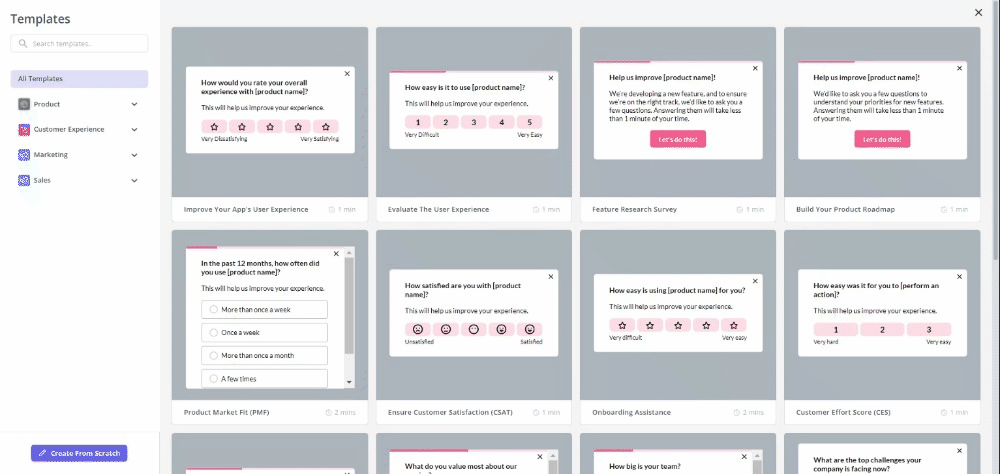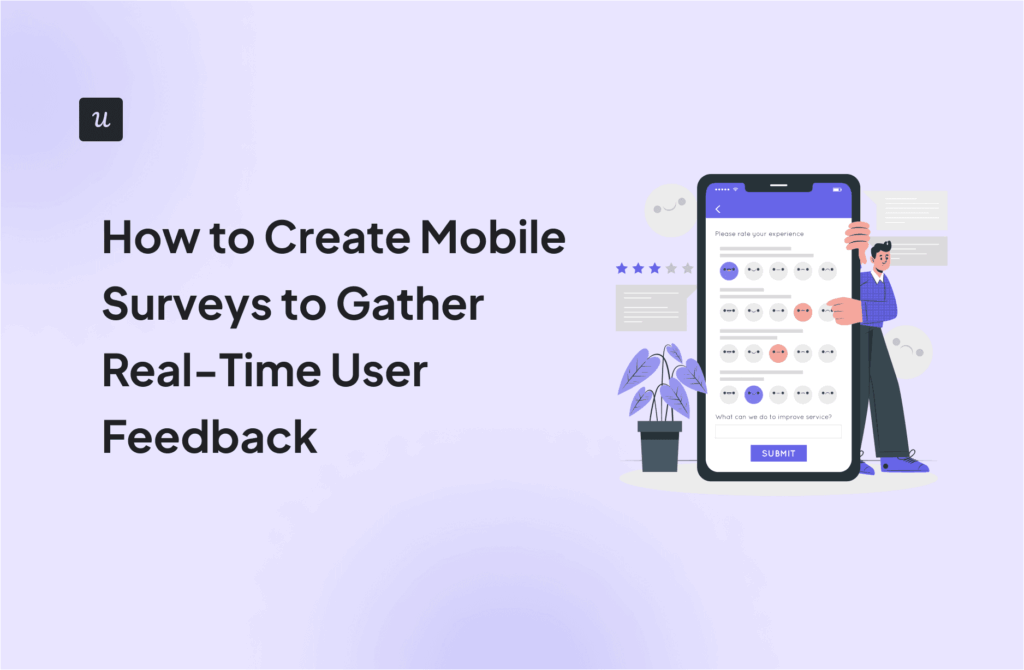
Try Userpilot Now
See Why 1,000+ Teams Choose Userpilot

Helpful resources for UX designers
To excel in UX design, it’s important to continually learn and stay updated with the latest trends and best practices. Here are some top resources for UX designers, including books, webinars, podcasts, and blogs.
Best books for UX designers
Reading books by industry experts can provide deep insights and practical knowledge about UX design.
- “The Design of Everyday Things” by Don Norman – A classic book that explores the principles of good design and user experience.
- “Don’t Make Me Think” by Steve Krug – Focuses on web usability and intuitive design principles.
- “Lean UX” by Jeff Gothelf and Josh Seiden – Integrates UX with Agile methodologies for more collaborative and effective design processes.
- “Hooked: How to Build Habit-Forming Products” by Nir Eyal – Discusses the psychology behind user habits and how to create engaging products.
- “Inspired: How to Create Products Customers Love” by Marty Cagan – A guide on product management and creating products that resonate with users.
Best webinars for UX designers
Webinars offer real-time learning and insights from industry experts.
- Userpilot Webinars – Focus on user onboarding, engagement, and product growth.
- NNG (Nielsen Norman Group) Webinars – Expert insights on various UX topics, including usability and user research.
- Interaction Design Foundation Webinars – Cover a wide range of UX research and design principles.
- Baymard Institute Webinars – In-depth discussions on e-commerce usability and UX research.
- UX Design Institute Webinars – Detailed webinars on UX design principles and career development.
Best blogs for UX designers
Following blogs can help you stay updated on the latest trends, tips, and best practices in UX design.
- Userpilot Blog – Insights on user onboarding, product growth, and UX design.
- NNG (Nielsen Norman Group) Blog – Research-based articles on UX design and usability.
- Smashing Magazine – Covers a wide range of topics, including UX design, web development, and product management.
- UX Matters – Offers practical advice and insights on various UX research and design topics.
- UX Collective – Community-driven platform with articles on UX research, design, and industry trends.
These resources provide valuable knowledge and practical advice, helping you stay current and excel in your role as a UX Designer.
Best podcasts for UX designers
Listening to podcasts is a convenient way to stay informed and inspired by industry leaders while on the go.
- “User Defenders” – Interviews with UX design heroes sharing their stories and insights.
- “The UX Intern” – Conversations with UX professionals about their career paths and experiences.
- “UI Breakfast” – Discussions about UI/UX design, product strategy, and business with various experts.
- “What is Wrong with UX” – Experienced UX designers critique current trends and practices.
- “Awkward Silences” – Focuses on user research and customer experience insights.
Best certifications for UX designers
The value of UX/UI certifications and courses in landing a job is a topic of ongoing debate in the design community. While some hiring managers don’t prioritize certifications, they do see them as a sign of commitment to continuous learning. Therefore, a certification can be beneficial, especially for those new to the field or seeking to transition careers. It can demonstrate your knowledge of fundamental UX/UI principles and processes, making you a more competitive candidate.
So, here are some legitimate courses to consider:
- Certifications:
- Nielsen Norman Group UX Certification: This remains the gold standard in the UX field, offering specialized tracks on topics like information architecture, interaction design, or user research. Their certifications are well-respected and highly sought after by employers.
- University-Backed Programs and Certificates:
- Carnegie Mellon University – Human-Computer Interaction (Online): This program offers a Master’s degree and several certifications in HCI, providing a deep dive into the theoretical and practical aspects of designing user-centered interfaces.
- University of Washington – Certificate in UX & Visual Interface Design: This certificate program focuses on the intersection of UX and visual design, equipping you with the skills to create aesthetically pleasing and user-friendly interfaces.
- Georgia Tech – HCI Graduate Certificate: This online program offers a graduate-level certificate in HCI, delving into research methods, design principles, and emerging technologies in the field.
- Other Courses and Programs:
- Google UX Design Professional Certificate (Coursera): This program remains a great starting point for beginners, offering a comprehensive introduction to UX design principles and processes.
- DesignLab’s UX Academy: This immersive bootcamp provides comprehensive training in UX design, including user research, wireframing, prototyping, and user testing. It also offers mentorship from experienced UX professionals and career support to help you land a UX design job.
- Treehouse UX Design Track: Treehouse offers a flexible and affordable way to learn UX design online. Their UX Design Track covers a wide range of topics, from user research and wireframing to interaction design and usability testing.
Best tools for UX designers
Having the right tools is crucial for UX designers to enhance productivity, creativity, and collaboration.
Here are some of the best tools tailored for specific use cases:
- Best tool for User Onboarding and Engagement – Userpilot: Userpilot helps UX designers create personalized in-app experiences and smooth onboarding processes. It allows for real-time user feedback and insights to improve user engagement and retention.
- Best tool for Project Management – Monday: Monday.com offers a visual and flexible platform for managing projects and tasks. It’s ideal for UX designers to track project progress, collaborate with team members, and meet deadlines.
- Best tool for Product Management – Jira Software: Jira Software is perfect for tracking and managing design tasks, user stories, and sprints. It ensures seamless communication between designers and developers, facilitating efficient project workflows.
- Best tool for Customer Experience – Zendesk: Zendesk provides comprehensive customer support solutions. UX designers can use it to gather and analyze user feedback and support tickets, identifying areas for improvement in the user experience.
- Best tool for UX/UI Design – Figma: Figma supports real-time collaboration on design projects, making it ideal for creating wireframes, prototypes, and high-fidelity designs. It allows for easy sharing and feedback collection.
- Best tool for Documentation and Collaboration – Confluence: Confluence allows UX designers to create, share, and manage design documentation. It’s perfect for maintaining a centralized repository of design guidelines, research findings, and project documentation.
- Best tool for Customer Success – ClientSuccess: ClientSuccess helps monitor and analyze customer success metrics. UX designers can use it to understand user outcomes and iterate on designs to improve overall customer satisfaction.
- Best tool for Data Analytics – Tableau: Tableau offers powerful data visualization capabilities, allowing UX designers to analyze and present user research data in an intuitive and visually appealing way.
These tools collectively empower UX designers to conduct thorough research, manage projects effectively, collaborate with teams, and present data-driven insights that enhance user experience design.
Conclusion
Professional growth is a continuous journey, and investing in your development is key to staying competitive in the field.
We hope this guide has equipped you with the tools and knowledge needed to excel in your role.
Looking into tools for UX designers? Userpilot is an all-in-one product platform with engagement features and powerful analytics capabilities. Book a demo to see it in action!








